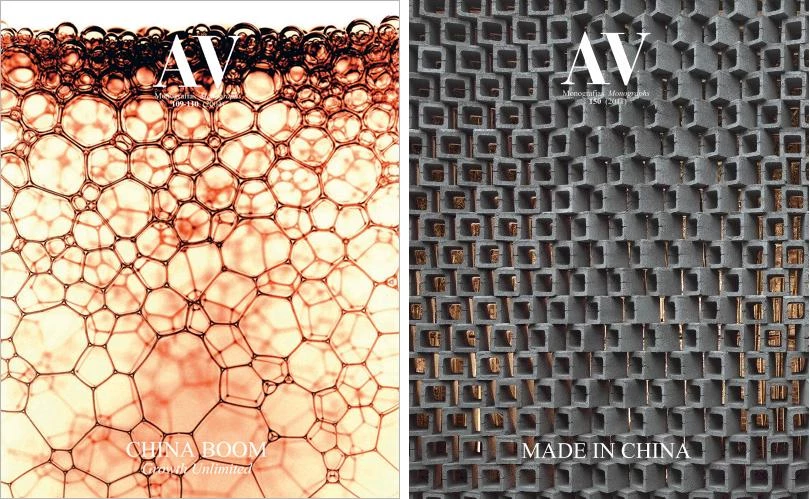Timeless China

In the last decade we have dealt with China often, and the succession of monographic issues maps an itinerary that can be summed up in three movements: the first one reported on the arrival of prominent international firms in the country; the second described the incorporation to the contemporary debate of many Chinese offices; and the third marked the recovery of the roots of tradition by a new generation. Each of these moments – opening, assimilation, return – has been covered in a special publication, but has also been present in books, thematic issues including Chinese studios, and articles devoted to the architectural debates in the Middle Kingdom.
The first overview appeared in AV 109-110 (2004), ‘China Boom’, a double issue to take due stock of an unprecedented urban explosion, where the symbolically relevant or technically complex works were commissioned to a ‘foreign legion’ of Europeans and Americans, culminating in its two metropolises with major events: the Games of 2008, covered in Arquitectura Viva 118-119 (2008), ‘Olympic Beijing,’ again a double issue to do justice to the extraordinary display of economic might and organizational skills of the new world power; and the Shanghai Expo, whose architectural content was previewed in Arquitectura Viva 129 (2009), ‘Shanghai 2010’.
The second movement was the central theme of AV 150 (2011), Made in China,’ where only works by Chinese architects were included, in contrast with the previous monograph, which featured 28 works by 16 firms, all of them foreign: in barely over five years the architectural landscape had changed dramatically, as advanced in the chapter devoted to China in Atlas. Architectures of the 21st Century: Asia and Pacific (Fundación BBVA, 2010), where half of the projects selected were designed by international studios and half by local teams, some of which reinterpreted the vernacular with that special sensibility that earned Wang Shu the Pritzker Prize in 2012.
The third moment is documented here in the text and works of ‘Timeless China,’ publishing projects by authors that were present in previous issues of AV, AV Proyectos or Arquitectura Viva, because their studios have been part of the international scene for some time, and now reach full maturity. It is indeed tempting to establish a connection between these architects’ effort to ‘build a new tradition’ and the aesthetic guidelines marked by Xi Jingping just a year ago, and which I discussed in ‘Extravagant Art,’ Arquitectura Viva 169 (2014), but in any case the winds of change are now blowing over a country that is no longer safe from the world’s turbulences.





